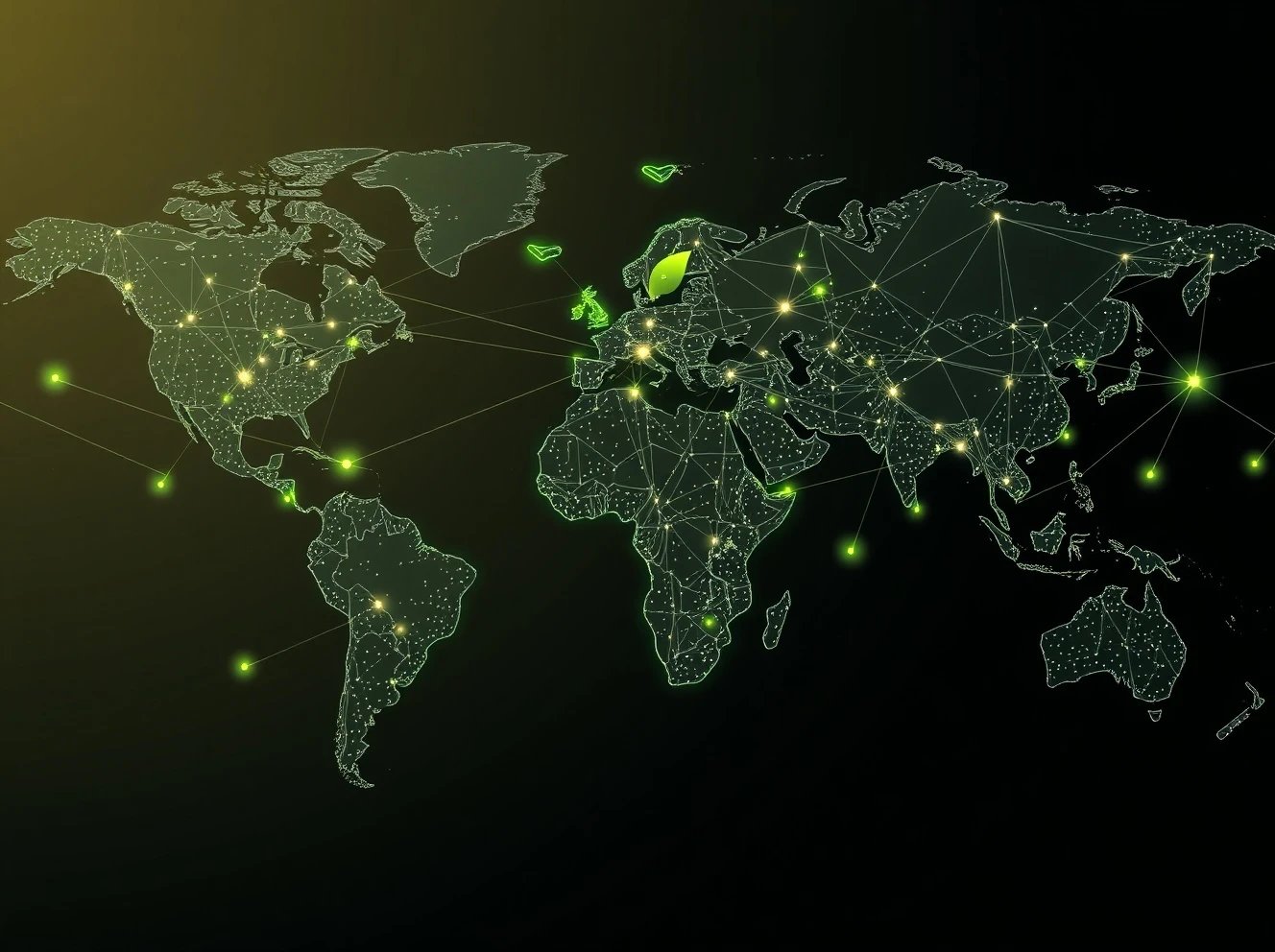In today’s interconnected economy, businesses face unprecedented scrutiny. Consumers, investors, and governments demand greater accountability. Therefore, achieving global supply chain transparency is not merely an ethical choice; it represents a fundamental pillar for long-term success. Organizations must proactively adopt robust strategies to ensure clarity at every stage, from raw material sourcing to final product delivery. This commitment safeguards reputations, builds trust, and fosters a more resilient, responsible business environment.
Why Global Supply Chain Transparency is Essential for Success
Transparency builds unwavering trust. Modern consumers, increasingly aware of social and environmental issues, expect brands to demonstrate accountability in sourcing, manufacturing, and distribution. According to a Harvard Business Review report, companies embracing transparent supply chains often experience increased brand loyalty and reduced reputational risks. Furthermore, governments worldwide are implementing stricter regulations to curb unethical practices, including forced labor, child labor, and environmental exploitation. By prioritizing global supply chain transparency, businesses not only comply with legal requirements but also demonstrate a profound commitment to sustainability, fairness, and responsible practices. This approach significantly enhances brand value and secures a competitive edge.
Leveraging Digital Innovations for Enhanced Transparency
The digital transformation of supply chains has made transparency significantly more achievable. Businesses are increasingly adopting cutting-edge technologies like blockchain, Artificial Intelligence (AI), and Internet of Things (IoT) solutions. These tools track goods from their origin to final delivery, creating a verifiable and accessible record. Specifically:
- Blockchain Technology: This innovation ensures that every transaction and data point is recorded securely. It creates an immutable, distributed ledger of the product journey, making it virtually impossible to alter records. For example, companies like IBM have developed blockchain-based solutions, enabling organizations to trace materials and verify authenticity with unparalleled precision.
- IoT Sensors: These devices provide real-time visibility into shipping conditions. They monitor critical factors such as temperature, humidity, and location. This ensures product quality and integrity throughout transit, providing immediate alerts for any deviations.
- AI-Driven Analytics: AI processes vast amounts of supply chain data. It highlights inefficiencies, identifies potential risks, and forecasts disruptions across the entire chain. Consequently, businesses can make proactive, data-driven decisions.
This kind of digital innovation dramatically builds trust and accountability with all stakeholders, solidifying global supply chain transparency.
Read Also: Matcha Supply Chain Crisis: How Global Demand is Disrupting Markets
Ensuring Accountability Through Robust Supplier Audits
Relying solely on supplier reports is insufficient for true transparency. Businesses must conduct independent supplier audits to verify ethical and sustainable practices. Regular inspections, certifications, and third-party evaluations are crucial steps in this process. For instance, platforms offering supplier verification services help businesses avoid fraudulent partners and ensure compliance with international standards. These audits typically cover:
- Social Compliance: Verifying labor conditions, wages, working hours, and the absence of forced or child labor.
- Environmental Standards: Assessing waste management, energy consumption, water usage, and pollution control.
- Quality Assurance: Ensuring product quality and adherence to specified standards.
By working only with verified suppliers, companies strengthen their reputation and minimize operational risks. This commitment is vital for maintaining high levels of global supply chain transparency.
Prioritizing Ethical Sourcing and Fair Labor Practices
One of the most critical elements of global supply chain transparency is ensuring ethical sourcing and fair labor practices. Businesses should establish clear, non-negotiable standards for all their suppliers. These standards must cover:
- No Child Labor or Forced Labor: Strict policies prohibiting the exploitation of vulnerable populations.
- Fair Wages and Safe Working Conditions: Ensuring employees receive a living wage and work in environments free from hazards.
- Non-Discriminatory Hiring Practices: Promoting diversity and equal opportunity in employment.
- Sustainable Material Sourcing: Ensuring raw materials are obtained responsibly, without contributing to deforestation or depletion of natural resources.
Companies neglecting these areas risk severe reputational damage and legal repercussions. Conversely, those actively promoting ethical sourcing often attract socially conscious consumers who are willing to pay more for responsibly made products. This directly contributes to a stronger brand image and fosters greater loyalty.
Integrating Sustainability and Environmental Responsibility
Today’s global market is heavily influenced by environmental concerns. Companies must therefore demonstrate a strong commitment to reducing their environmental footprint throughout their supply chains. This includes:
- Partnering with Eco-Friendly Suppliers: Choosing partners who share a commitment to environmental stewardship.
- Using Recyclable or Biodegradable Packaging: Minimizing waste and promoting circular economy principles.
- Reducing Reliance on Fossil Fuels in Transportation: Investing in greener logistics and alternative fuel sources.
- Implementing Circular Economy Practices: Designing products for longevity, reuse, and recycling, thereby minimizing waste.
Brands like Patagonia and Unilever stand as leading examples of businesses successfully integrating sustainability into their supply chains. This not only boosts global supply chain transparency but also significantly enhances consumer trust and market appeal. Such initiatives showcase a genuine dedication to planetary well-being.
Harnessing Data for Informed Decisions in Transparent Supply Chains
True global supply chain transparency requires actionable insights derived from comprehensive data analysis. By gathering and analyzing data across their entire supply chain, businesses can:
- Identify Risks and Inefficiencies: Pinpoint weak points or bottlenecks before they escalate into major problems.
- Forecast Potential Disruptions: Use predictive analytics to anticipate delays caused by geopolitical events, natural disasters, or economic shifts, allowing for proactive rather than reactive responses.
- Ensure Compliance with International Regulations: Monitor adherence to various laws and standards, reducing the risk of penalties.
- Improve Communication with Stakeholders: Share relevant data to foster better understanding and collaboration with suppliers, customers, and regulators.
For example, advanced analytics can help a company anticipate raw material shortages or shipping delays, enabling them to adjust production schedules or explore alternative routes promptly. This data-driven approach empowers businesses to navigate complexities with greater agility and confidence.
Cultivating Strong, Collaborative Supplier Partnerships
Transparency is inherently a collaborative effort. Businesses should therefore focus on building long-term, strategic partnerships with their suppliers, moving beyond purely transactional relationships. This can be effectively achieved by:
- Sharing Expectations Clearly: Defining ethical, environmental, and quality standards from the outset.
- Providing Training and Resources for Compliance: Offering support to help suppliers meet required standards and improve their own practices.
- Encouraging Suppliers to Adopt Their Own Transparency Measures: Fostering a culture of openness throughout the entire network.
- Engaging in Joint Sustainability Projects: Collaborating on initiatives that benefit both parties and the environment.
By fostering cooperation and mutual respect, businesses create a supply chain ecosystem that deeply values accountability and integrity. This collaborative spirit is fundamental to achieving and maintaining high levels of global supply chain transparency. It transforms the supply chain from a series of transactions into a network of shared responsibility.
Navigating and Complying with International Regulations
Global supply chains operate under a complex and ever-evolving web of laws and regulations. Businesses must ensure rigorous compliance with standards such as:
- EU Supply Chain Due Diligence Directive: This directive mandates companies to identify, prevent, and mitigate human rights and environmental impacts in their value chains.
- UK Modern Slavery Act: Requires companies to publish an annual statement detailing steps taken to prevent modern slavery in their operations and supply chains.
- US Tariff Act Section 307: Prohibits the importation of goods produced by forced labor.
These frameworks aim to eliminate forced labor, promote human rights, and protect the environment. Staying updated with evolving regulations is not just a legal necessity; it ensures businesses avoid severe legal consequences while building immense credibility and trust. Proactive compliance is a hallmark of responsible global supply chain transparency.
Building Trust Through Public Reporting and Disclosure
Public reporting stands as one of the most effective ways to showcase a business’s commitment to global supply chain transparency. Businesses should consistently publish comprehensive reports, including:
- Annual Sustainability Reports: Detailing environmental, social, and governance (ESG) performance.
- Supplier Lists: Providing transparency about their network of partners.
- Third-Party Audit Results: Demonstrating independent verification of practices.
- Progress on Ethical and Environmental Goals: Sharing measurable achievements and areas for improvement.
Such disclosures not only strengthen trust with consumers but also attract socially responsible investors who highly value transparency and accountability. Public reporting transforms commitments into tangible evidence, reinforcing a brand’s integrity.
The Future Landscape of Transparent Global Supply Chains
As global supply chains continue to grow in complexity, global supply chain transparency will remain a defining factor in business success. Companies that invest proactively in digital technologies, ethical partnerships, and sustainability initiatives will gain a significant competitive advantage. More importantly, they will foster deep trust among stakeholders while building critical resilience in an increasingly unpredictable global market. The future demands adaptability, responsibility, and an unwavering commitment to open practices. Conclusion Transparency in global supply chains is no longer optional—it is an absolute necessity for survival and growth. Businesses that prioritize digital tracking, ethical sourcing, robust supplier audits, comprehensive sustainability measures, and regulatory compliance will undoubtedly thrive in today’s competitive landscape. By making supply chains more transparent, companies not only safeguard their reputation and strengthen customer trust but also ensure long-term, sustainable growth. This strategic approach defines leadership in the modern economy.
Frequently Asked Questions (FAQs)
Q1: What is global supply chain transparency? A1: Global supply chain transparency refers to the ability of businesses and consumers to access and understand information about the products they buy, from their origin and manufacturing processes to the labor conditions and environmental impact involved. It means having clear visibility across every stage of the supply chain. Q2: Why is global supply chain transparency important for businesses? A2: It’s crucial for several reasons: it builds consumer trust and loyalty, reduces reputational risks, ensures compliance with international regulations (e.g., against forced labor), attracts socially responsible investors, and helps identify and mitigate operational risks and inefficiencies. Q3: What technologies can enhance supply chain transparency? A3: Key technologies include blockchain for immutable record-keeping and traceability, IoT sensors for real-time tracking and condition monitoring, and AI-driven analytics for identifying risks and optimizing operations. These tools provide verifiable data throughout the supply chain. Q4: How can businesses ensure ethical sourcing in their supply chains? A4: Businesses can ensure ethical sourcing by establishing clear codes of conduct for suppliers, conducting regular independent audits, verifying certifications (e.g., Fair Trade), promoting fair wages and safe working conditions, and actively combating child and forced labor. Q5: What role does public reporting play in transparency? A5: Public reporting, such as annual sustainability reports, disclosure of supplier lists, and sharing third-party audit results, is vital. It demonstrates a company’s commitment to accountability, strengthens trust with consumers and investors, and showcases progress towards ethical and environmental goals. Q6: How do international regulations impact global supply chain transparency? A6: International regulations like the EU Supply Chain Due Diligence Directive or the UK Modern Slavery Act mandate businesses to identify, prevent, and report on human rights and environmental impacts in their supply chains. Compliance is essential to avoid legal penalties and uphold ethical standards, directly driving greater transparency.







